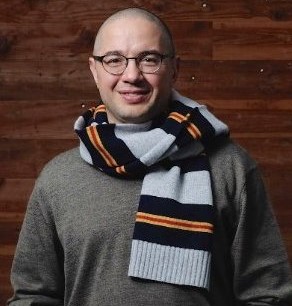With the Oculus Rift launching next month, and other headsets like the HTC Vive and PlayStation VR expected to follow sometime soon, 2016 will be a milestone year for virtual reality technology. That’s partly why the Vision Summit, an all-new event that showcases some of the best and brightest innovations in virtual and augmented reality, is the place to be this week.
Marcos Sanchez, head of global communications for Unity Technologies, joined [a]listdaily to discuss hosting the Vision Summit, which will include industry leaders from Oculus VR, Valve, Sony, and more, and to to talk about the future of this emerging technology.
 Can you tell us what the Vision 2016 Virtual and Augmented Reality Summit is and what its goals are?
Can you tell us what the Vision 2016 Virtual and Augmented Reality Summit is and what its goals are?
Taking place February 10 and 11 in Hollywood, California, the Vision VR/AR Summit will feature technology, business and consumer innovators as well as a wide array of informative breakout sessions designed for all skill levels. These more than 40 breakout sessions will cover the latest technologies and best practices, while revealing some of today’s most creative and inspiring projects, many of which will be recognized in the Vision VR/AR awards show. The full list of finalists can be found here. The event will include demos and sessions from the leading VR/AR technologies and platforms makers in the industry, such as PlayStation VR, Steam VR and Oculus VR, as well as an introduction to Windows Holographic from the Microsoft HoloLens team. Not to mention some interesting announcements from Unity.
In addition to acclaimed designer and storyteller Alex McDowell, the Summit has added industry luminaries Palmer Luckey, Founder of Oculus; Clay Bavor, Vice President of Virtual Reality at Google; Dr. Richard Marks, Director of the PlayStation Magic Lab, Sony Computer Entertainment; Dr. Jeff Norris, Mission Operations Innovation Lead at NASA’s Jet Propulsion Laboratory; John Riccitiello, CEO, and Joachim Ante, CTO of Unity Technologies, as its featured keynote speakers. The event will also feature a special address from Gabe Newell of Valve.
Attendees will also have the opportunity to demo new and award-winning experiences in the VR/AR Showcase, with four rooms of expertly curated content from around the globe and an incredible list of Showcase participants.
There is a lot of excitement surrounding VR/AR technology. How long do you think it will be before we will see mass consumer adoption?
Augmented reality and virtual reality are just beginning to gain traction as we see a convergence between the availability of consumer grade headsets and truly compelling content in the form of games and experiences. Of course, this will take some time to reach critical mass, but the space itself is seeing investment and interest levels that mean it’s here to stay.
We see the VR/AR Vision Summit as a great meeting ground for innovators, indies, developers, designers and hardware companies, and a place where important dialogue can occur to push the space to the next level. To the question of how long mass adoption will take? That’s a hard thing to gauge exactly, but certainly over the next few years, we’re going to see a hockey stick upward in terms of adoption levels. That’s going to be driven as much by the hardware and costs as it is by developers and artists creating amazing experiences, many of which you’ll be able to see at the show.
What have been some of the most impressive or innovative VR/AR projects you’ve seen so far?
There are quite a few stunning examples, many of which will be on display at the Vision VR/AR Summit in the Vision Showcase. The Showcase will feature a wide array of projects, including exciting and imaginative VR and AR games, tools, entertainment, social applications, art projects, architecture and educational programs.
One example was created by one of the Keynote speakers, Alex McDowell and the Leviathan project. The project’s reception at the Sundance festival was overwhelmingly positive, and an indicator of the public’s appetite for VR/AR. Check out the full list on our website and make sure to stop by, enjoy the experiences, and talk to the developers about their tips and tricks in developing for VR.
What are some of the challenges developers struggle with when promoting VR/AR technology?
VR is a game-changing technology, but it can be difficult to show people how truly unique VR is without first-hand experience. Great VR content is already available, but videos and images of VR games and videos don’t quite do them justice. To help drive adoption, it’s critical to raise awareness and provide more people demos and access to hardware.
The industry has made great strides toward that over the last year, launching a variety of consumer headsets such as Google Cardboard and Samsung’s Gear VR, and more advanced headsets such as Oculus, Microsoft HoloLens, HTC Vive and PlayStation VR will be available in the coming months.
As the technology continues to grow over the coming years, what would you say is the most important thing for users and developers to keep in mind about it?
Mass adoption of VR/AR won’t happen overnight but it will happen, and it will be driven as much by indie developers pushing the creative boundaries, as by larger more established content and game creators. Further, consumer applications are only part of the story, enterprise and corporate applications abound, and will most certainly play a role in adoption.
Being at the center of that by providing content and game creators both big and small, with a place to make their dreams come to life is pretty exciting. We’ll not only facilitate the solving of hard problems in creation, but also help make them successful by bringing their titles and offerings to life across a spectrum of devices. As much as it is about creating something amazing, we want them to reach the biggest audiences possible.

